Identifying the True Claymore Types Among Scottish Swords
NO AI USED This Article has been written and edited by our team with no help of the AI
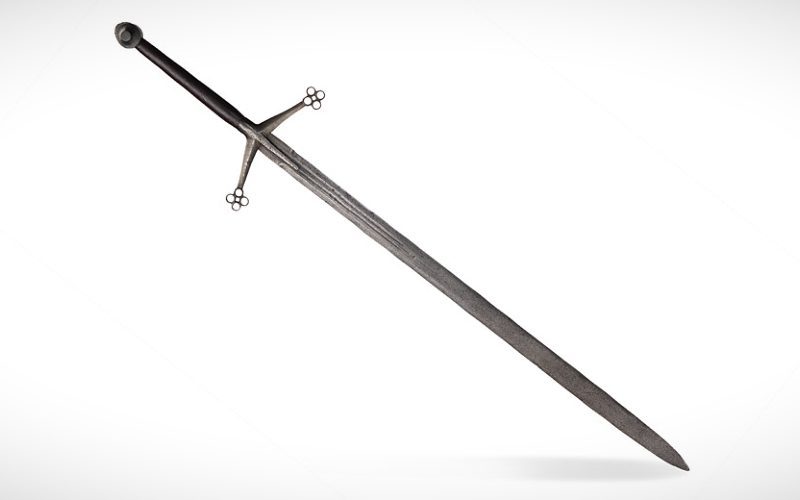
The claymore has played a significant role in the military history of Scotland. However, the term claymore itself often stirs debate, involving several distinct types of swords used by the Scots, ranging from two-handed types to basket-hilted broadswords.
Let’s clarify the distinctions among the various types of Scottish swords and bring an end to the long-standing claymore debate.
Where Does the Name Claymore Come From?
The term claymore originates from the Scottish Gaelic claidheamh mòr, meaning great sword. It specifically refers to the two-handed sword historically used in Scotland, wielded by Scottish Highlanders in the early 16th century.
However, there were three types of Scottish two-handed swords used in various regions, and some authors described all of them as claymore.
The term claymore is also associated with the basket-hilted swords, a type of 17th-century military sword used by the Scots.
Ewart Oakeshott, a historian and expert on medieval arms and armor said, “We’re really forced by common usage to go on using these quite misleading nineteenth-century collector’s terms, even though we know now they are inaccurate.”
Identifying the True Claymore and Related Scottish Swords
Since the term “claymore” has been used to describe several Scottish swords with different types of hilts, there has been much debate among many historians, scholars, and collectors. Hence, the term true claymore or claidheamh mór has been used to distinguish it from other related swords.
Let’s take a look at how the confusion about the term claymore arose, what experts say about the matter, and clarify the differences between the types of Scottish swords linked to this name.
1. Highland Claymore

The Highland Scots developed a specialized two-handed sword in the early 16th century, regarded as the true claymore or claidheamh mór. It is distinguished by its openwork quatrefoil design at the end of the crossguard arms, which slant toward the blade.
The Highland claymore was used during the period of clan warfare and border conflicts with the English from 1400 to 1700. One of the last significant uses of the two-handed claymore was during the Jacobite victory at the Battle of Killiecrankie in 1689.
Why the Confusion: The anglicized version of the term claymore in the 17th century initially referred to a basket-hilted broadsword. It was only later that “claymore” came to denote a two-handed sword. Additionally, there seems to be no example in Gaelic of anyone referring to a two-handed sword by this name.
What Experts Say: “The true claymore, of course, is the ‘twahandit’ (two-handed) sword used in the Highlands in the sixteenth century,” says Ewart Oakeshott.
2. Lowland Sword
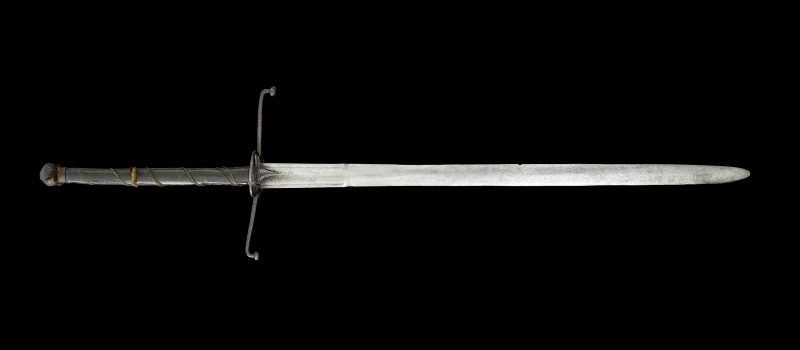
Another type of two-handed sword used by the Scots was the Lowland sword, known for being the largest and heaviest among all two-handed varieties. It is characterized by its long, slender, straight crossguards with sharp downturned ends, along with ring-guards on both sides.
In the Lowland region of Scotland, the king and his nobles were accompanied by retainers and professional men-at-arms. The Lowland sword formed a significant part of the Lowland armory, carried by those representing royal authority, serving not only as a weapon but also as a stately symbol.
Why the Confusion Arises: The term claymore is associated with the Scottish two-handed sword, although historically, there were three distinct types of these swords in Scotland.
In a bulletin from the American Society of Arms Collectors, expert Tony Wills examined these three types, each associated with different regions of Scotland. Specifically for his paper, Wills uses the term claymore to refer to the three types of 16th-century Scottish two-handed swords – the West Highland Claymore, Lowland Claymore, and Clamshell Claymore.
What Experts Say: “These are generally known as ‘Lowland swords’, never as claidheamh mór,” says Ewart Oakeshott. However, it is difficult to be sure whether it was used exclusively in the attributed Lowland region.
3. Clamshell-Hilted Sword

The clamshell-hilted sword “is a smaller two-handed sword, more adaptable as an all-round skirmishing weapon than the Lowland two-hander,” says Tony Wills. Its most distinctive feature is the shell-shaped guards, with gently sloping crossguard arms. It was used across the Lowland region, particularly in areas farthest from centers of authority.
In the 16th century, the border between Scotland and England was lawless, inhabited by riding clans known as the Border Reivers. During this period, both Scottish and English bands raided freely across and along the border, disregarding nationality and authority. The clamshell-hilted sword served as a portable and effective weapon in small scale skirmishing, ambushing, and raiding.
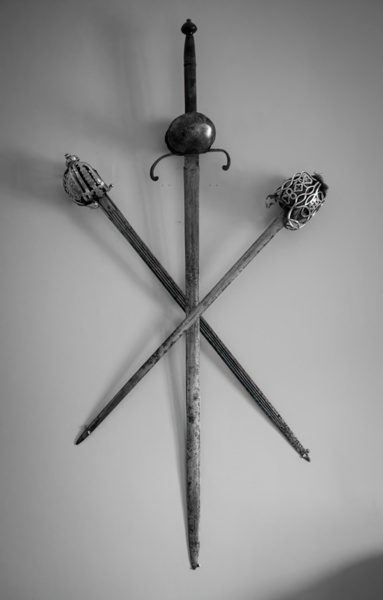
Why the Confusion Arises: In association with the term claymore referring to Scottish two-handed swords, expert Tony Wills specifically referred to the clamshell variety as a Clamshell claymore in his bulletin, which discusses the three distinct types of Scottish two-handed swords.
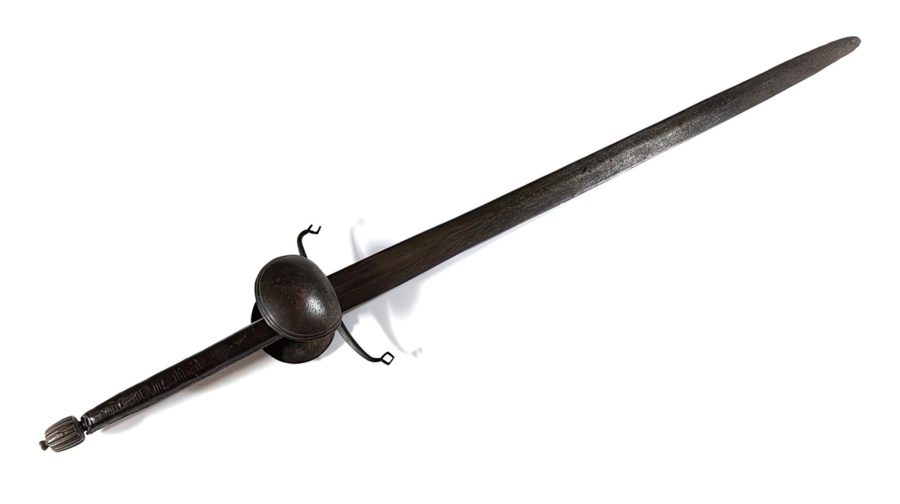
What Experts Say: Ewart Oakeshott described this type as ‘another form of the Lowland sword’, noting that while its blade and pommel are similar to those of the Lowland sword, the guards are different.
4. Scottish Basket-Hilted Broadsword
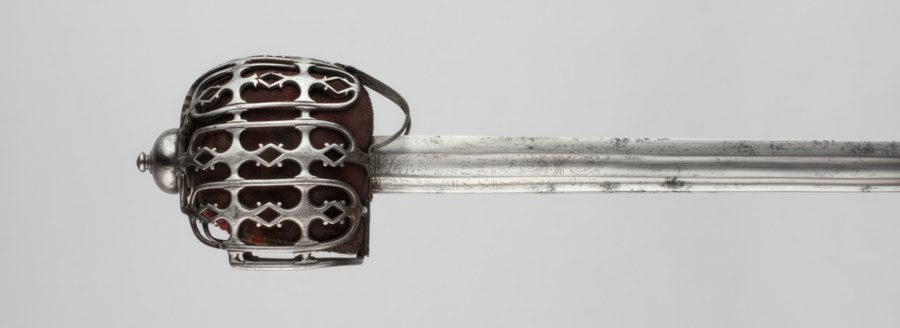
The basket-hilted broadsword, a 17th-century military weapon, has long symbolized Scottish independence. Its distinctive basket guard, designed to protect the hand, was well-suited to the battlefield conditions of the time, where armor and gauntlets were obsolete. It was used during the Jacobite rebellions of the late 17th and early 18th centuries, notably at the Battle of Culloden.
In Scottish Gaelic, the basket-hilted broadsword was known as claidheamh beag or claybeg, which translates to small sword. Therefore, many historians and scholars argue against calling it a claymore, which actually refers to a great sword. It is often referred to as the Scottish sword, broadsword, or occasionally the Highland sword.
Why the Confusion Arises: The name claymore was transferred to the basket-hilted broadsword, which became Scotland’s national weapon after the older, two-handed sword fell out of use. This adoption likely occurred because many of the older claymore blades were cut down and repurposed for use in basket-hilted broadswords.

What Experts Say: From the early 16th century, the Scots referred to their basket-hilted broadsword as a claymore. “With such respectable contemporary usage behind it, the name may well be allowed to stick,” says Ewart Oakeshott. He further argues, “[Those] who made and used it [basket-hilted broadsword] did not mind the inaccuracy; [therefore] we should not boggle at it either.”
Oakeshott quoted an example of the basket-hilted broadsword being referred to as a claymore. In 1746, during the Jacobite army’s retreat from Derby, its rearguard led by Lord George Murray faced an attack from Cumberland’s dragoons. “Murray drew his broadsword, yelled ‘Claymore!’ and charged into them with the MacPhersons and the Glengarry MacDonalds,” says Oakeshott.
Claude Blair, a British museum curator and expert in European arms and armor, also noted its usage. He quoted a literary reference where Highlanders “having their broadswords drawn, cried ‘clymore’ [claymore].” However, it’s unclear whether claymore in this context referred to their broadswords or was simply a battle cry.
Furthermore, the use of the term claymore to refer to the basket-hilted broadsword was supported by a regimental order of the Cameron Highlanders in 1817 and in the Dress Regulations of 1883. Claude Blair, in his discussion of early basket hilts, also used the term claymore as the official Scottish military designation for these basket-hilted broadswords used by the Highlanders.
Conclusion
The name claymore became associated with various types of Scottish swords, notably the two-handed Highland claymore considered as the true claymore. Scots also referred to their basket-hilted swords as claymores, a tradition that may continue. Additionally, other Scottish swords such as the Lowland and Clamshell variants hold their own distinct characteristics and significance.

